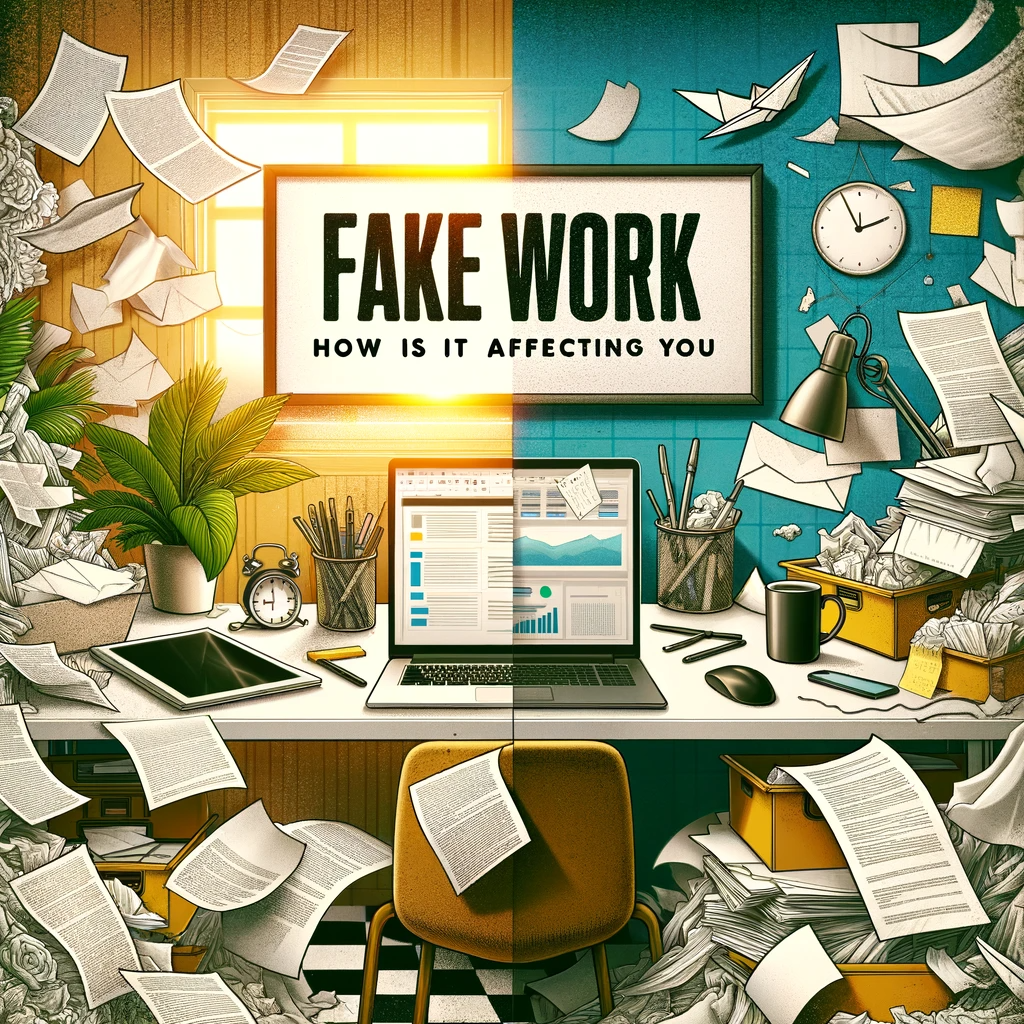Fake Work – How is it Affecting You?
There you are — busy, busy, busy. Making your “to-do” lists. Talking ’bout that new project.
Before you know it, you’re at the end of another day – feeling overwhelmed. Transferring things that didn’t get done onto tomorrow’s list — again!
Are these activities really moving you – and your organization — forward? Or are they taking up your time and giving the illusion you’re being productive? There’s a reason it’s called busywork!
It all comes from wanting that feeling of accomplishment – even if it doesn’t stem from the things you really need to accomplish. Over time, it can take quite a toll.
That Sense of Accomplishment
True confessions: how many of you have even added items to your to-do list after you’ve done them – just so you can cross them off? I’ve been guilty of that – busted! Maybe we can find a 12-step program.
You’re not alone out there. My research shows this is a common problem in organizations – and in life. There’s even a book entitled, Fake Work: Why People Are Working Harder Than Ever But Accomplishing Less, and How to Fix the Problem.” The co-authors are international business consultants Brent Peterson and Gaylan Nielson.
“Fake work includes everyone from the inattentive CEO who changes strategy too frequently, to the social-climbing manager who creates busywork to make herself look important, to the line worker who just doesn’t want to do anything today,” explain Peterson and Nielson
Roughly 50 percent of the work employees do fails to advance the organization’s strategies, according to the authors. Yikes!
Fake Work vs. Real Work
So, how do you tell the difference between fake work and real work? Simply put, fake work is comprised of low-priority busy tasks that distract us from the real work at hand.
“Not only does fake work drain a company’s resources without improving its bottom line; it also steals conviction and morale from employees and results in communication breakdowns, poor productivity and turnover,” say the authors. Talk about a double-edged sword!
So, how can you turn fake work into real work?
The first step is identifying those time-consuming tasks and shifting your focus to work that will actually achieve goals. You may be so accustomed to old patterns it’s even hard to recognize what’s robbing your time.
Check out the snapshot below. As a disclaimer, I’ll note these activities deserve attention at some point. They just don’t need to dominate your schedule.
Fake Work Examples
From my own experience – and an examination of “Busy Work vs. Real Work” by author Paul Ellsworth on the website, Productivityist — the following activities are common distractions in the workplace:
- Checking e-mail incessantly to make sure your Inbox is at zero
- Checking Facebook countless times a day
- Organizing the files on your computer
- Straightening your desk
- Surfing the Internet – getting distracted by articles
- Processing low priority mail or papers
- Allowing everyone who stops by your office to hang at the door and chat
Years ago I learned the “ABC Method” of prioritizing responsibilities. In a nutshell it involves differentiating between top priority tasks (As), medium priority tasks (Bs) and low priority tasks (Cs). Human nature causes us to move toward “C” tasks because they’re easy to cross off our lists. Gotta love that instant gratification!
I’ve discovered a way around this, though. To get the instant gratification of the “C” tasks, I’ve chunked the “A” tasks down into multiple parts. That way, I’m still making progress on the most important items, while giving myself some achievement awards along the way.
Dangers of Fake Work
Many of today’s organizations are overworked, yet underperforming. Dr. Stephen Covey refers to this as “being trapped in the thick of thin things.”
If left unchecked, according to Peterson and Nielson, fake work can:
- Mire employees in redundant tasks
- Contribute to low morale
- Result in cost overruns
- Contribute to organizational stagnation
- Drive a stake through the heart of innovation
Real Work Matters
Real work is usually hard — with no quick rewards. How can you make real work a priority, while still getting the necessary busywork done at some point?
Author Ellsworth invites us to try a sample day, using the following method:
- Write down everything you need to do. Get it out of your brain.
- Identify the three most important things.
- Don’t do anything else until “the top three” are done.
If only you lived in a perfect world.
Obviously, you need to factor in time for necessary meetings, phone calls, emails and interactions with coworkers. The key is to limit these activities and NOT allow them to distract you from “the top three.” If possible, set aside small blocks of time to tend to these items, while staying focused on the big picture.
When you go to plan your next day, evaluate how well this strategy worked. Did you get “the top three” done – or make significant progress? What tweaks are necessary?
You’ll be amazed at how much work you’ll actually get done when you do the REAL work instead of the busy work. And there are positive side effects to this method, according to Ellsworth. When you do the stuff that really matters, you’ll find time for the busy work as well. And you’ll end up being less stressed.
Don’t fake it ’til you make it. Get out there – and get real!


